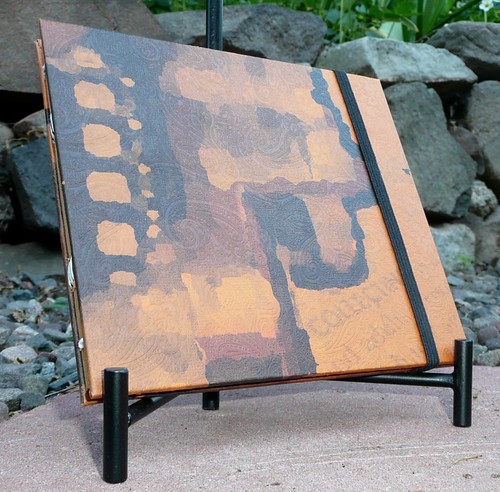To start, determine how big you want the pocket. I want my pocket to be 5.75" wide, and the back of it to be 5" tall. I want my pocket to be 2.25" tall. This is a sketch of my finished pocket.
Cut your paper to be 0.75" wider than the width (5.75 + 0.75 = 6.5") and as tall as the pocket plus back (5 + 2.25 = 7.25"). This is a sketch of the piece of paper I'll need to cut, with dashed lines where I'll need to score the paper.
Score your paper at 2.25" (to form the pocket) and at 3/8" on two of the edges. I like to use a scor-it board. It makes super accurate scores, and creates a ridge along the score that makes trimming the paper easier.
Trim off the two edges that measure 3/8" x 5" with a craft knife and ruler. To make folding the pocket easier later, cut the strip just a little wider than 3/8", and remove the strip with an angled (rather than straight) cut. If you've used a scor-it to make your score line, you can cut just past the edge of the ridge of the score line.
Fold along all remaining score lines and reinforce with a bone folder. If your pocket doesn't fold the way you'd like, this is your last chance to trim a little bit of paper off to "make it work!"
Apply glue to your short flaps, and place them on the back of the pocket. This creates a really nice clean pocket with no raw edges to get caught on anything you insert into it. I often use these pockets to place a CD of the photos that I've used to finish the book so everything is in one place.
To finish my book, I glued the pocket onto the back cover, and pressed overnight. Pressing was really important for this book since I had so many ridges created by the eyelets and raw edge of the elastic.
Now, stand back and admire your handy-work!









Thank you for posting this. I love the look of pockets, but I find them hard to make....you just made my life a little bit easier :)
ReplyDelete